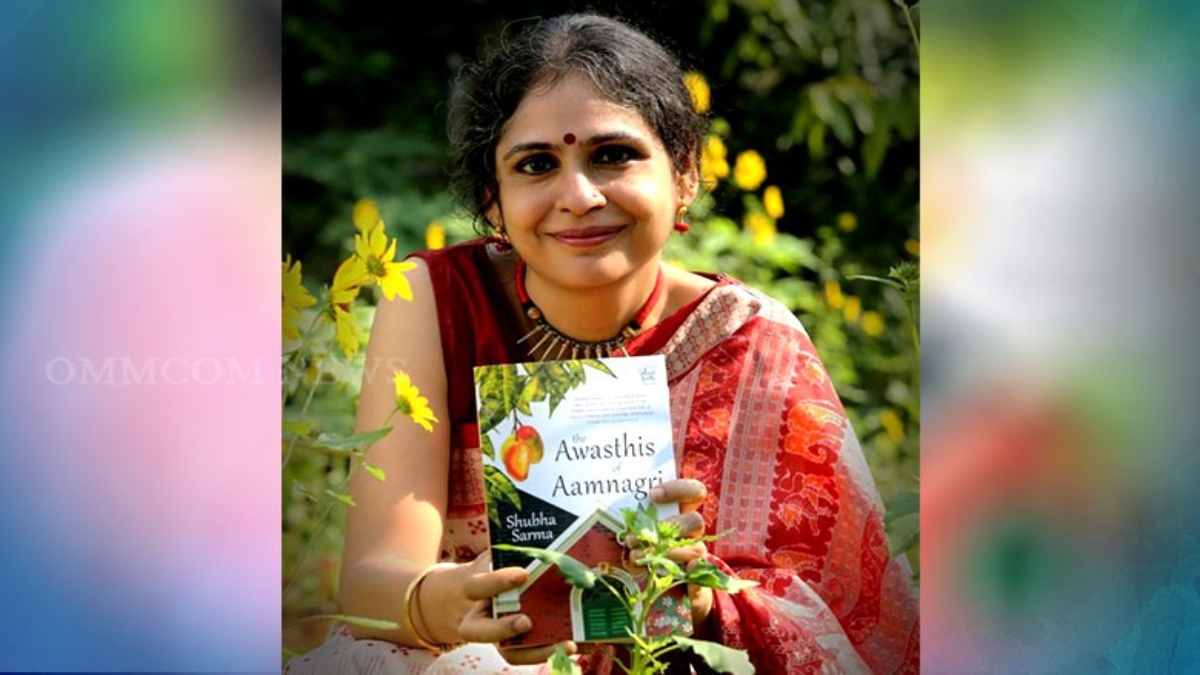IAS officer and author Shubha Sarma wants her books to entertain the readers and also allow them to escape to a magical world for a few hours. In a freewheeling conversation with The Daily Guardian, she talks about her new book, The Awasthis of Aamnagari (Niyogi publications, Rs 350). Excerpts:
Q. What made you decide to weave a story around a joint family? Do you believe along with the interesting characters the haveli also plays a crucial role in the book?
A. I wanted to write about the centre of most of our universes: the family. The joint family is such an interesting institution, with all the ingredients of a perfect drama. There is a range of emotions including love, envy, empathy, and anger. You name it and the emotion is there. There is also a vast canvas in terms of the characters. You have different types of people, brought together by the accident of birth or marriage. It is a writer’s delight to play with such a vast canvas of characters, emotions and incidents.
The house in which the story is set is called Panditji’s Haveli. It is as much a character as any of the humans. It has a distinct personality and is a silent observer of the escapades of the Awasthi family. In fact, it is the first character that the reader encounters and the first chapter is about it, titled “A House is Bought, a Home is Built”. Hence, the Haveli and its inhabitants play a central role in the novel.
Q. Families are like the sweet mangoes of Aamnagri—messy, filled with juicy secrets and sticking together through all times. What role does Aamnagri play in this book?
A. Aamnagri is the city of mangoes, located on the confluence of the rivers Ganga and Yamuna. It acts as a perfect foil for the antics of the Awasthi family.
Q. What was the most fun part about penning ‘The Awasthis of Aamnagari’? Which character, in particular, you enjoyed fleshing out?
A. I enjoyed writing it tremendously. It was the first time that I was attempting a full-fledged novella and the challenges apart, it was an enjoyable experience. I particularly enjoyed writing the humorous bits, such as the court drama or the scenes with the astrologer. The entire novella has many funny episodes and there were times that I was chuckling to myself even as I wrote those parts.
‘The Awasthis of Aamnagari’ is dominated by two characters, namely Pandit Awasthi and his wife Shakuntala. The others come and go in different episodes. Nevertheless, each character, no matter how short its role, is clearly etched in my mind. I have not given them too much space in the pages, but in my mind, they are all equally well fleshed out. For instance, in the chapter “The Ghost who ate the eggs’, the character of Chedilal is given prominence. In another chapter, it is the house help Gauri who is in the limelight, in yet another, it is the pet parrot Totalal who gets centre stage. Hence, it would perhaps be right to say that I enjoyed making all the characters come alive depending upon the role that they played in that chapter.
Q. Location and life experiences can really influence writing. Did you grow up in a joint family? Is it true that those experiences, consciously or subconsciously, found its way into this book?
A. True, a writer is the product of her/his social and cultural milieu. Indeed, I grew up in a joint family, as most people in my generation did. Summer vacations were spent in grandparents’ homes and family functions were real entertainers with a lot of preparations, frequent disagreements and ultimate reconciliations. I have included a few experiences from my family, yet others are from stories heard from friends and colleagues. One never knows where an idea gets seeded. At times, a colleague would narrate an interesting experience at work and years later, when I sit down to write, that would find its way into my book. Rather than conscious thought, most of the writing draws upon thoughts and ideas tucked away sub-consciously.
Q. What do you hope readers will take away from ‘The Awasthis of Aamnagari’? How will your words make them feel?
A. I am an avid reader and two kinds of books stay with me, long after I’ve put them down- those which make me laugh and entertain me thoroughly such as “My family and Other Animals” or those which make me think and brood such as “Gone With The Wind”. In ‘The Awasthis of Aamnagari’, I have tried to bring these diametrically opposite styles together. The book is a laugh riot and most readers have admitted that they laughed aloud in several places while reading it. At the same time, certain parts are extremely serious, that makes you introspect and think about issues such as neglect of the elderly and loneliness among ageing parents.
Q. How was it like penning this piece of work while balancing your professional and personal life?
A. It was difficult but I enjoy challenges and getting the better of them! I had written short stories earlier and found it much easier as I could complete a story in two or three sittings over a few weeks. In this case, I had to keep going back and forth to maintain factual consistency. At times, I even mixed-up names and only when I read the whole book after completing it that I made those corrections. Writing is a demanding hobby and I have a demanding profession too. So, it is often very difficult to find time to write. That is the reason it took me seven years after my first book was released to come out with the second one.










